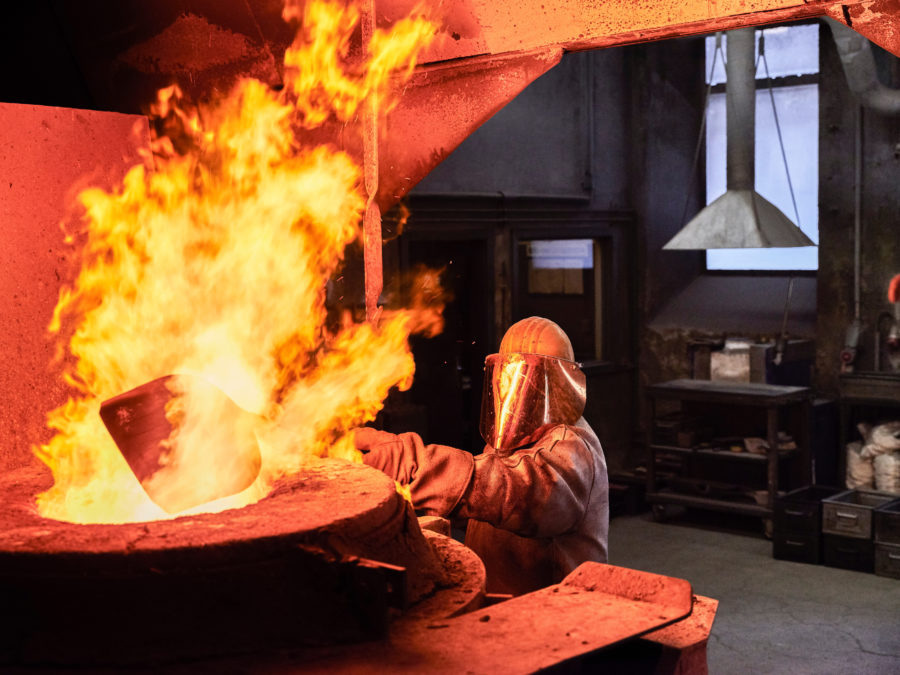Accelerating trends in metals and mining dealmaking: Q&A with Sidley M&A Partner

The metals and mining industry saw a significant rise in merger and acquisition (M&A) activity in 2023 —driven by the global energy transition, a theme market analysts expect to continue in 2024.
Global investment in clean energy is rising, and so is demand for minerals essential to battery production. Major mining companies are using M&A to acquire assets in the green metals space to stay competitive and accelerate beyond the traditional process and timeline.
Last year showed a 40% increase in deals across lithium, cobalt, and nickel – four times higher than 2019, according to international law firm Sidley, and one of the few bright spots in M&A in 2023.
Sidley M&A partner Joseph Michaels advises metals and mining clients, providing guidance on corporate governance, SEC disclosure, fiduciary duties for M&A, private equity, venture capital, and corporate finance transactions.
Michaels advised Allkem Limited in its merger of equals with Livent Corporation, a transaction valued at $10.6 billion, and which created the world’s third largest lithium miner and co-authored “Key Considerations for Cross-Border M&A in the Mining and Metals Industry,” Chambers and Partners, in 2023.
Chicago-based Michaels shares his industry insights exclusively with MINING.COM.
MDC: With M&A activity in the sector increasing significantly over the past year as mining companies are consolidating operations to create cost efficiencies and synergies, what opportunities for deals does this create amidst increased competition?

Michaels: Recent years have been eventful in the mining and metals industry. We continue to see mining and metals companies explore and pursue M&A at the highest levels in years. Some dealmakers in other industries have adopted a wait and see approach until various conditions improve, but that has not been the case in the mining and metals industry.
The rise of M&A has been notwithstanding volatile markets, and in many cases actually because of the dynamics underlying them. Dealmaking has been fueled by the green energy transition, rising costs to develop new projects, new government incentives, potential for risk-sharing, and continuing desires to build scale, enhance value chains and diversify.
We expect M&A activity in the industry to remain strong. We remain optimistic that the robust levels of M&A activity in the industry are sustainable and compelling opportunities will continue to arise.
MDC: Transactions in metals and mining sectors are highly influenced by commodity prices. What should companies anticipate when changes in the prices of metals can significantly impact the valuation and prospects of a potential deal?
Michaels: Changes in the prices of metals can significantly impact the valuation and prospects of a potential deal. At the end of the day, deal discipline is required of buyers, sellers and partners.
On one hand, current market realities need to be recognized and accounted for since they will impact valuation exercises, financing, integration efforts, and market messaging. At the same time, it is important to give due consideration to longer-term views as well, particularly in light of energy transition dynamics and reserve levels. Quality assets are always going to sell, even in difficult markets, so long as agreement on valuation can be reached. Sometimes, that requires creative pricing structures.
MDC: Majors are looking to acquire mid-tiers and beleaguered juniors in a cash starved environment to enter the green energy metals space. What growth opportunities do you see in this scenario?
Michaels: In this market, there are opportunities for many types and sizes of companies to benefit. We are seeing a wide range of transaction types being proposed and discussed, including buyouts, investment opportunities, and partnership arrangements.
Dealmaking is an important tool in any management team’s strategic option toolkit. Depending on the nature of the parties and transaction, deal drivers may include opportunities presented by the green energy transition, rising costs to develop and operate new projects, new government incentives, the potential for risk-sharing, and the continuing desires to build scale, enhance value chains and diversify.
MDC: Given the nature of the sector, what due diligence is vital in transactions to understand the value of assets, liabilities, potential risks?
Michaels: A transaction in the mining and metals industry is a unique endeavor. A thoughtful, well-advised and agile approach is critical to achieve the potential rewards of dealmaking, especially in a fluid market. Mining and metals companies have particular due diligence needs, the breadth and depth of which is not necessarily seen in all other industries.
In terms of valuation drivers, in addition to cash flow, resource and reserve, and operations due diligence, buyers and investors should have a sense of relevant synergies, government incentives, trade policies, tax considerations, and cash management practices. When assessing risk, it is important to be mindful of a target company’s government relations, compliance programs, labor practices, land and water usage, pollution sources, supply chain, ESG profile, and local community relations. An effective and calibrated due diligence process is often part of what makes a deal successful.
MDC: What regulatory hurdles should be anticipated?
Michaels: There is little doubt that the regulatory environment is challenging in certain areas of the world right now. Regulators have become quite active, in some cases discouraging or delaying certain dealmaking. In a few instances, the heightened regulatory focus has been specifically targeted at the mining and metals industry, given its economic and geopolitical significance. There are obviously ways to get deals done when they are compelling.
While deals implicate various regulatory areas, obtaining antitrust and foreign screening clearance typically need to be top of mind for dealmakers. These are often the biggest hurdles to executing a transaction, given that antitrust regulators and foreign investment screening regimes in many jurisdictions have increasingly scrutinized deals.
This is emphasized in the mining and metals industry, given that the nature of the industry and the location of critical minerals has led to significant M&A activity occurring on a cross-border basis. There is a premium on being well-prepared and developing an effective strategy to communicate why a deal is compelling and address any concerns.
MDC: What are the key requirements for legal expertise in the space for successful execution of an M&A deal?
Michaels: All M&A requires coordination among a broad range of constituencies and advisors. In the mining and metals industry, interdependencies among stakeholders are magnified by the globe-spanning business and the exposure to government scrutiny. It is critical to be well-prepared and well-advised from the outset.
An early understanding of deal structure and approval requirements and insight into local conventions permits dealmakers to effectively manage the process, avoid pitfalls and seize opportunities. We continue to see in-house legal teams in the industry consist of elite level practitioners. Experience in the industry is key for both in-house and outside counsel supporting M&A efforts, given the complexity and specialized considerations.
While industry factors are important in any M&A transaction, they are emphasized in the mining and metals industry where due consideration needs to be given to unique government approval, public disclosure, community relations, ESG, and labor relations, among other matters.
{{ commodity.name }}
{{ post.title }}
{{ post.date }}



Comments